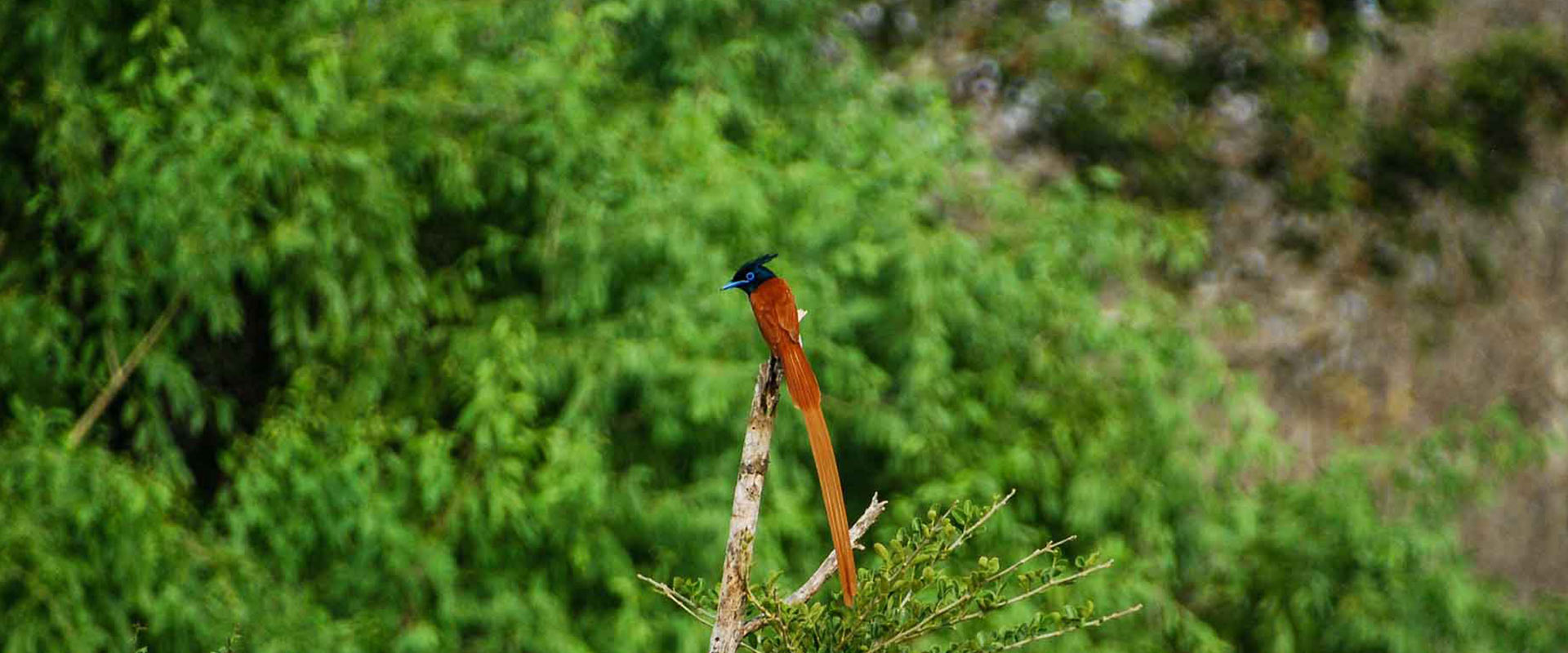Migrant Birds of Sri Lanka
Migrant birds are birds that travel long distances from cold winter regions to warmer regions at regular time intervals. This is a natural phenomenon which occurs due to their inability to survive the winter periods in a given habitat due to the extreme weather conditions and lack of food.
Sri Lanka, being a tropical island with diverse ecosystems, provides these weary travellers an abundance of food which makes us a favourable (and favourite!) destination for migratory birds throughout the year.
While the number of migrants we expect on our shores are huge, the start of the “migration season” is marked by the arrival of the following colourful and visible species:
- Blue-tailed Bee-eater
- Barn Swallow
- Indian Pitta
- Indian Paradise Fly-catcher
- Common Redshank
Blue-Tailed Bee Eater
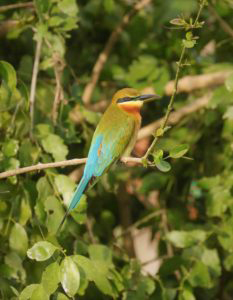 Photographed by Ranger Anjallee
Photographed by Ranger AnjalleeFamily — Meropidae
Scientific name — Merops philippinus
Visiting us from their breeding grounds of Southeast Asia, Blue-tailed Bee Eaters are stunning to look at – with rich hues of blue and green and yellow on its plumage. They nest colonially in sandy river banks or open flat areas. They make a relatively long tunnel in which about 5-7 white eggs are laid.
In some parts of the world they are referred to as the “Blue-Cheeked bee-eater”. Key identification points are from its face that has a narrow blue patch with a black eye strip, and a yellow and brown throat. The tail is blue – a beautiful iridescent blue! It can reach a length of 23-26 cm including the two elongated central tail feathers. Sexes are alike.
It’s predominantly eats insects specially bees, wasps, hornets and dragonflies. Watching these bee-eaters display their aerial agility in catching insects mid-air has been a hit with our guests!
Indian Pitta
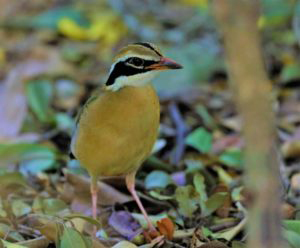 Photographed by Pradeep
Photographed by PradeepFamily — Pittidae
Scientific name — Pitta brachyura
This marvellous bird is very colourful, usually shy and hidden in the undergrowth where it picks insects on the forests floor. It is known to feature nine colours in its plumage. Because of it colourful feathers, there is a legend among the villagers that believe the peacock stole the pitta’s feathers and kept it forever!
This bird is native to the Indian subcontinent and it breeds in the forests of the Himalayan Hills of central and western India and migrates to other parts of the peninsula in winter. They typically travel along rivers, mountain range forests as well as other ecosystems.
During migrant season, the Indian Pitta can be heard around the country, even in busy cities like Colombo, in and around parks and home gardens.
The pitta makes its own unique, distinctive two-note whistling call after sunrise, in the mid of day and before Sunset to mark and announce their territory. You’ll be sure to hear them outside your cocoon during winter months.
Barn Swallow
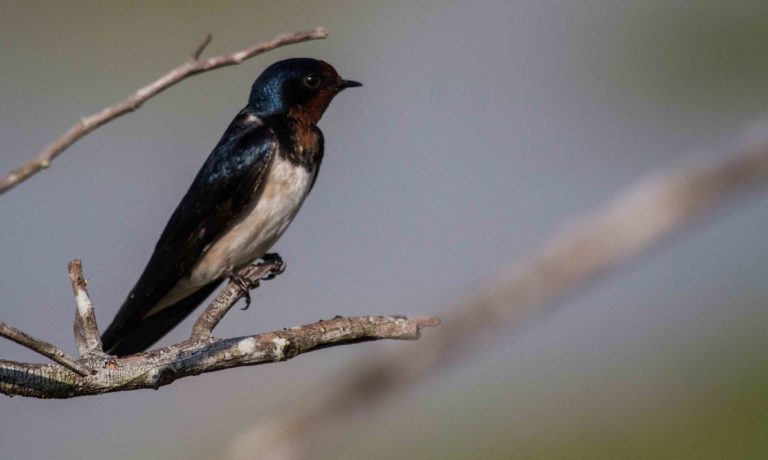 Photographed by Ranger Keith
Photographed by Ranger KeithFamily — Hirundinidae
Scientific Name — Hirundo Rustica
The Barn Swallow is one of earliest migrants to Sri Lanka (the first waves reach our shores as early as middle August. Once peak season is here, they are abundant around the rice paddies, marsh lands, lakes and open areas.
The Barn Swallow is the most widespread species of swallow in the world, and features blue upperparts and a long deeply forked tail. Their breeding rang spans America, Europe, Siberia, and Japan. They are resident year round in regions such as North Africa, Central America and North India.
Like most species of swallows, they build cup-like nests from mud pellets in barns or similar structures, and also feed on insects caught in flight.
They are quite habituated, and often can be seen resting on man-made structures such as electric wires and fences.
This species is one of very important bird for farmers as a biological pest controller. The Barn Swallow is the national bird is Austria and Estonia.
Indian Paradise Flycatcher
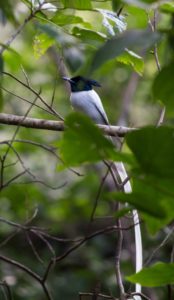 Photographed by Ranger Keith
Photographed by Ranger KeithFamily — Monarchidae
Scientific Name — Terpsiphone paradise
This bird, nicknamed the “robe thief” by Sri Lankan villagers, is a medium-sized bird native to the Indian subcontinent, Central Asia and Myanmar. Males have elongated central feathers with black and rufous plumage, although some populations have white plumage. Their female counterparts are short-tailed with rufous wings and black heads.
As they are migratory birds, they spend the winter season in tropical Asia. However, in southern India and Sri Lanka, apart from visiting migrants, we also have locally breeding populations. Their usual breeding season is between May to July. However, I have observed chicks emerging in October and November in Sri Lanka.
Both males and females take part in nest building, incubation brooding and feeding of their young. Their nests resembling a neat cup are made of twigs, smooth bark and spider webs,
Flycatchers feed on insects found below densely-canopied trees and amongst bushes.
Common Redshank
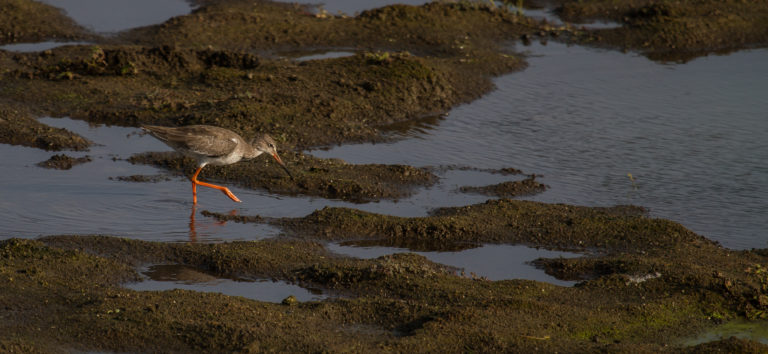 Photographed by Ranger Keith
Photographed by Ranger KeithFamily — Scolopacidae
Scientific name — Tringa totanus
The Common Redshank is a breeding bird with a widespread distribution found across temperate Eurasia. Due to their numbers, they are not considered a threatened species. It is a migratory bird, and spends their winters on coasts around West Africa, Sri Lanka, Southeast Asia and even Australia.
They are wary and noisy birds, alerting each other with their loud piping call. And, like most waders, they feed on small invertebrates.
The Common Redshank nests in high densities in any wetland, from dump meadows to saltmarsh
Ranger Suranga

